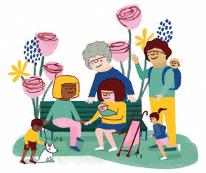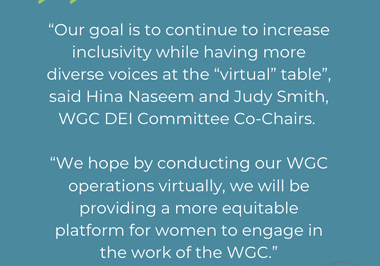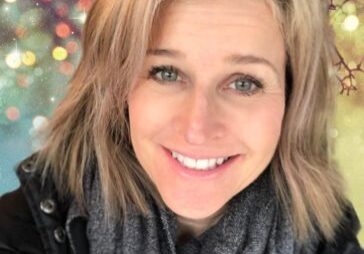JAMES ROUSE LISTENED TO HIS WIFE, LIBBY, WHO YEARNED FOR COMMUNITY
Heather Kirk-Davidoff
March 2017/April 2017
When you think of a laboratory, what images come to mind? Men in white lab coats pouring liquid from beaker to beaker? Edison’s  tangle of wires and filaments and switches? Do you imagine the Google offices with 20-somethings writing code on white boards between skateboarding breaks?
tangle of wires and filaments and switches? Do you imagine the Google offices with 20-somethings writing code on white boards between skateboarding breaks?
Add to those images this one: a little room with a fireplace framed by two built-in couches that face each other. A cozy spot, designed for conversation—and a place for inventing.
“The Nook” was what Libby Rouse called her favorite spot in her Baltimore house. Jimmy Rouse, James and Libby’s oldest child, remembers the discussions his mother and his father had there. “Their conversation began over cocktails in the Nook, followed by dinner together with us kids. After dinner, they’d go back to the Nook and keep talking.”
James Rouse brought his experience as a banker and a developer to those conversations. Libby brought her yearning for community. According to Jimmy, his mother had felt lonely as a child, playing more with her dog than with other children. As a young mother raising children in suburban Baltimore, she was struck by how isolated she felt and challenged her husband to be part of the solution.
In a profile of James Rouse in the February 24, 1967, issue of “Life” magazine, Rouse gives his wife credit: “If a man wants a reasonably balanced life he strongly needs a protesting wife who sets up a counterforce. The most important single force, philosophically, has been my wife … She has felt the inadequacy of the city and its fracturing impact, the absence of a rich community. I have come to see through her eyes the requirements of family and community.”
According to her son, Libby Rouse was a strong proponent of cul-de-sacs, which she felt created natural gathering spaces for families. She proposed mail kiosks for the same reason: neighbors would run into each other while getting their mail and strike up conversations with each other. Just like her Nook, these design elements brought people close enough together that they could talk.
Nowadays, cul-de-sacs are out of fashion. For many of us, the mail kiosks lost their appeal after our first winter in Columbia. But Libby’s belief that community arises when people can face each other and talk still rings true. At my church, we get our best ideas—for projects or for prayer practices—from small groups. I’ve been at tables in the Housing Department or the County Council building where the conversation nudged an idea closer to reality. And sometimes, as my husband and I settle down in front of our fireplace to muse about how we might solve some of the world’s problems, we offer a toast to Libby Rouse and her Nook.
Community is something we create together—and we can destroy it as well. Online, we seem emboldened to say things to each other that we would never say face-to-face. Up close, we can see when our words sting. It can be tempting to avoid looking our neighbors in the face when we’re not sure how they voted or where they stand on issues that matter to us. Separation may keep us safe, but it also keeps us stuck. When we reach out, when we meet, the friction we create may be just enough to generate a spark of insight.
If you’ve ever been to the Kittamaqundi lakefront, you’ve seen the life-sized bronze statue of Jim Rouse standing with his brother, gesturing with open hands. You’ll have to look harder to find the statue of Libby Rouse. A couple of years ago, her son Jimmy made a sculpture of Libby as a young girl, looking wistfully into the distance with her dog seated at her side. The statue is nestled behind a small pond at the back of the Sacred Garden of the Kittamaqundi Community church, my congregation.
There isn’t a fireplace in the garden, but there are benches. Some are situated for solo contemplations, but there are also pairs of benches perfect for conversation. Stop by the next time you’re around Vantage Point Road. Make a date to meet someone there. Just say it’s your laboratory and suggest that you invent something together.
Heather Kirk-Davidoff is a mom, foster mom, and the Enabling Minister of the Kittamaqundi Community Church in Columbia. She blogs at groundedandrooted.org.




